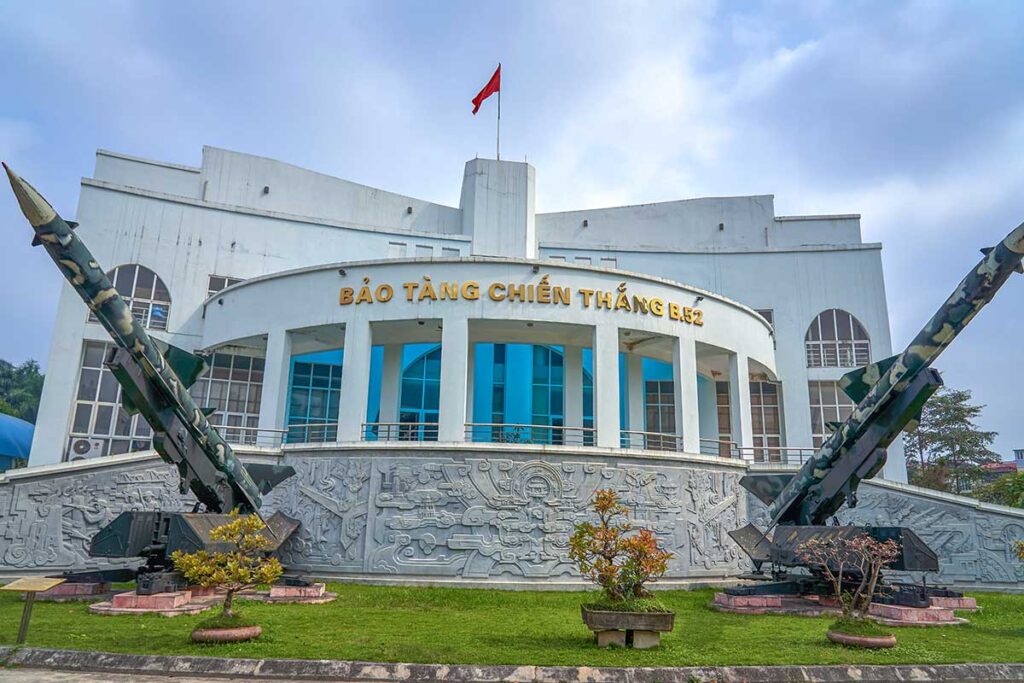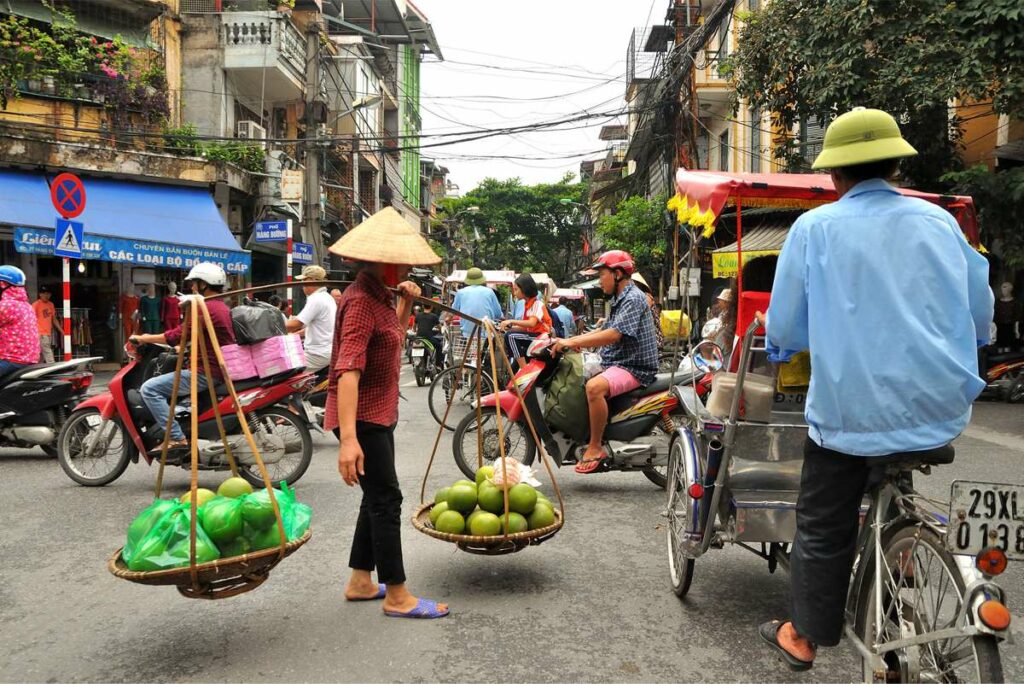What is the B52 Victory Museum about?
The B52 Victory Museum focuses on Hanoi’s defense during the December 1972 bombings, known in Vietnam as the “Dien Bien Phu in the Air” and internationally as Operation Linebacker II. The displays tell the story of how North Vietnamese air defenses managed to bring down American aircraft, including several B-52 bombers, in one of the most intense aerial campaigns of the Vietnam–US war.
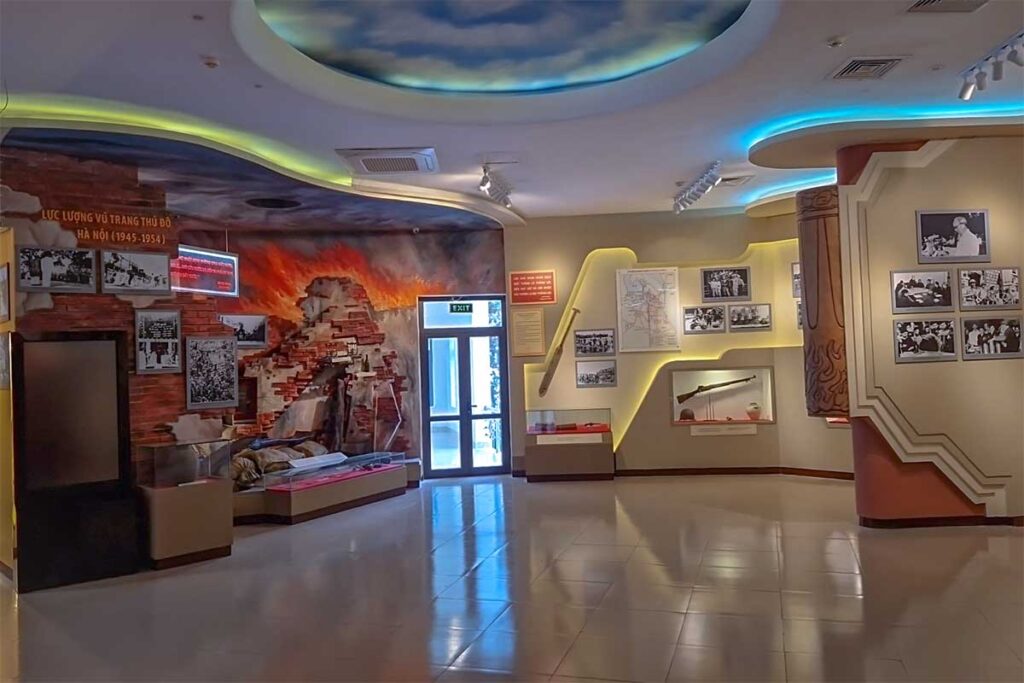
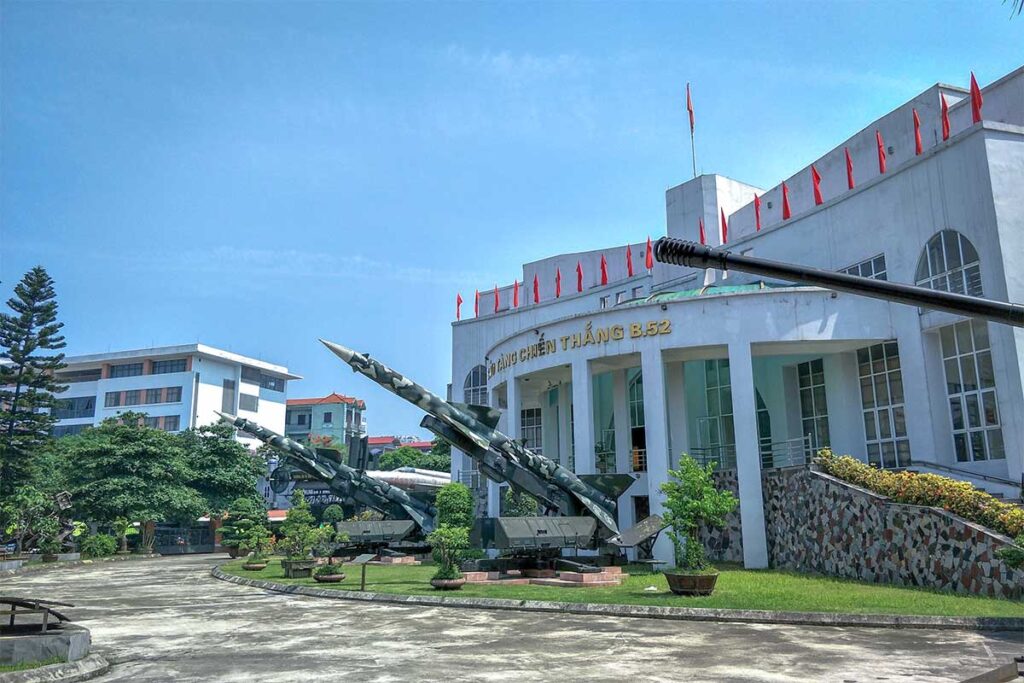
Rather than covering the entire conflict, the museum narrows in on this single event. It is a modest-sized site, combining one small exhibition building with an outdoor yard full of aircraft wreckage and military equipment. For travelers, it’s more symbolic than comprehensive, giving a snapshot of how this victory is remembered in Vietnam rather than offering a broad or deeply detailed history of the war.
Practical visiting information
Opening Times
The museum is open Tuesday to Thursday and Saturday to Sunday from 08:00–11:30 and 13:00–16:30. It is closed on Mondays and Fridays, something that often surprises visitors who don’t check ahead.
Entrance Fee
Entry is free of charge, making it an easy addition to a Hanoi sightseeing day.
Location & Address
The museum is located at 157 Doi Can Street, Ba Dinh District, about 1–1.5 km from landmarks like the Ho Chi Minh Mausoleum and One Pillar Pagoda. It’s in a regular neighborhood setting, not a large complex.
Facilities
Facilities are very limited. There is no café, shop, or air conditioning, and signage is mostly in Vietnamese with only a few translations into English. On hot days, the lack of air conditioning inside can make it uncomfortable to spend long periods there.
Highlights of B52 Victory Museum
1. The B52 wreckage
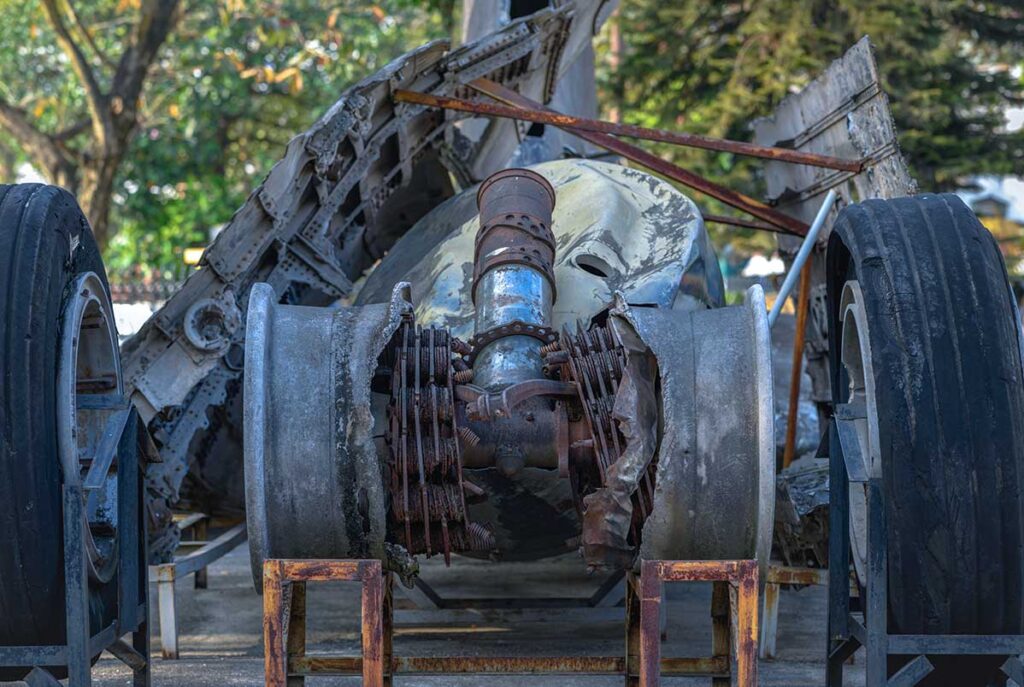
The main attraction is the wreckage of a B52 bomber, laid out in the outdoor courtyard. It has been reconstructed from debris collected after the December 1972 raids and gives a sense of the size of the aircraft, even though it’s incomplete. For many visitors, this wreck is the most striking reminder of Hanoi’s air defense victory.
2. SAM-2 Missiles & Anti-Aircraft Weapons
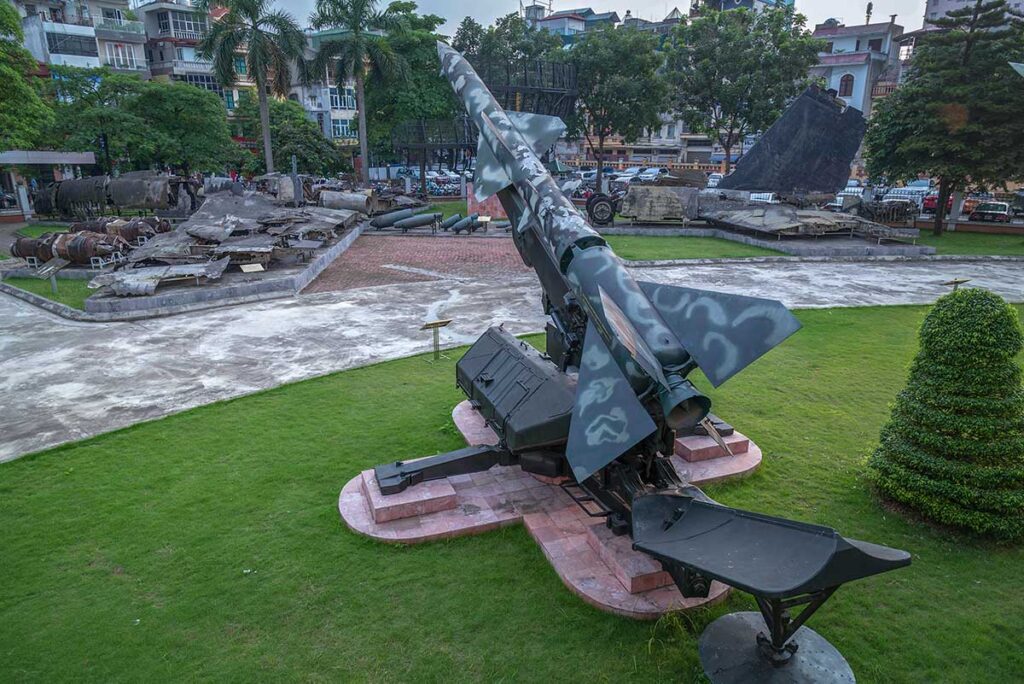
Two SAM-2 missiles stand prominently at the entrance, symbolizing the weapons credited with bringing down several B52s. Around the yard you’ll also find a range of anti-aircraft guns, from smaller machine guns to large-caliber artillery pieces, all part of the defense system used against American airstrikes.
3. MiG-21 Fighter Jet
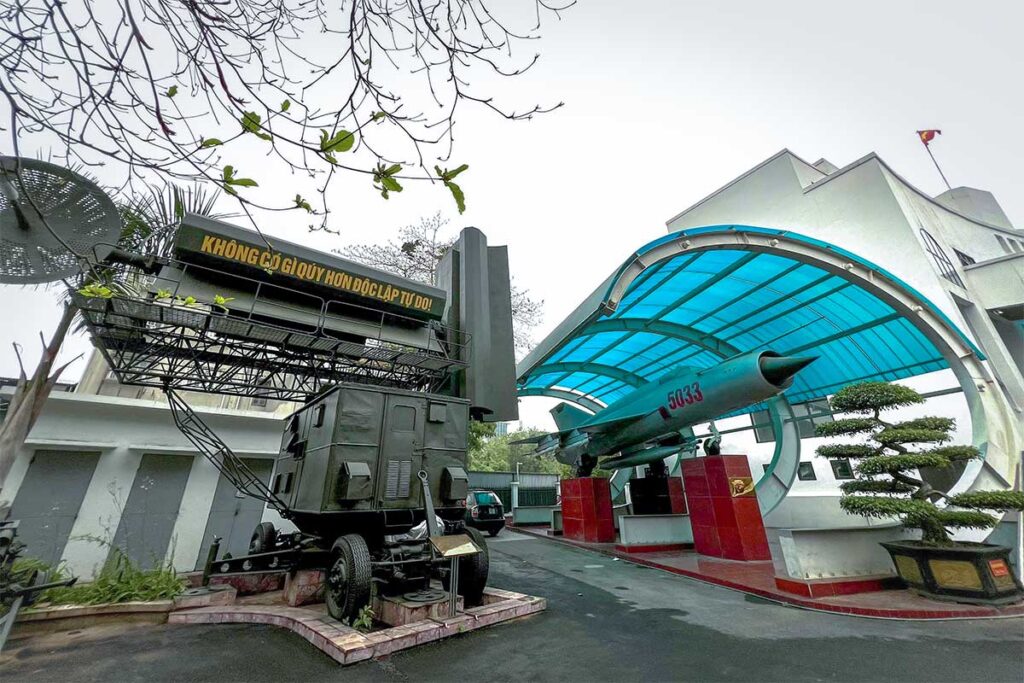
A MiG-21 fighter jet is also on display outside. This Soviet-designed aircraft was the backbone of North Vietnam’s air force during the war, often intercepting American planes over Hanoi. While not as eye-catching as the B52 wreckage, it adds important context to the air battle.
4. Radar and Air defense systems
The outdoor yard also includes a Fan Song radar and missile launchers, part of the surface-to-air missile network that played a key role in defending the city. These systems are static displays with limited signage, but they help illustrate how Hanoi’s defenses were organized.
5. Indoor exhibits
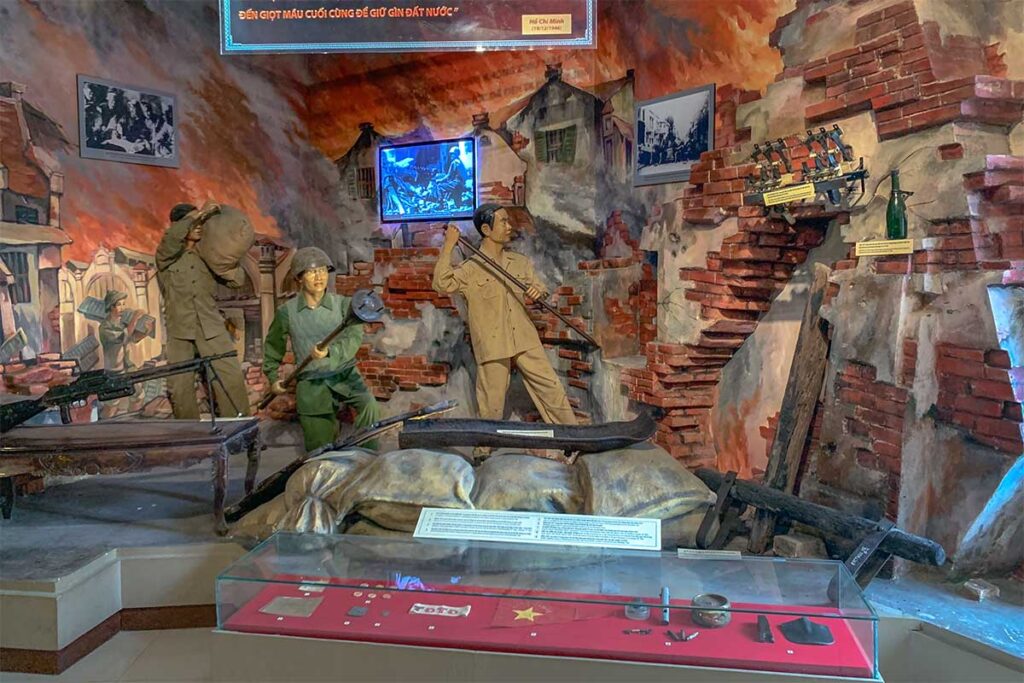
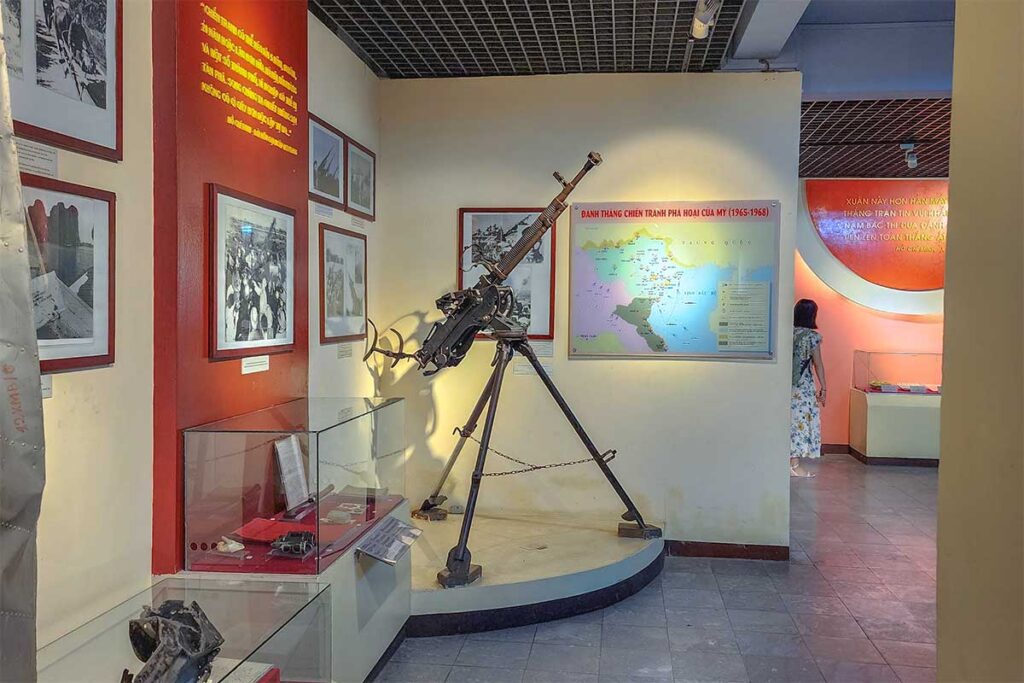
Inside the main building, the exhibition is modest. It includes photographs, dioramas, maps, and scale models that reconstruct the 12-day air campaign. The displays highlight both the destruction caused by the bombings and the tactics used to counter them. While small, these exhibits give more detail to the story behind the outdoor wreckage.
6. Historical context panels
Scattered throughout the museum are panels and text boards providing background on the battle. Most are written only in Vietnamese and reflect a strongly patriotic, one-sided view of events. For international visitors, this means the displays are more symbolic than explanatory, and it’s best to go in expecting limited English information.
How to get there
Taxi or Grab – The easiest way to reach the museum is by car. From the Old Quarter, it usually takes 15–20 minutes depending on traffic. Grab (ride-hailing app) is widely used in Hanoi and more convenient than trying to negotiate with a taxi driver.
Motorbike – Renting or using a motorbike gives flexibility, but parking around the museum is limited and not always clear. If you’re not confident driving in Hanoi’s traffic, this is not the best option.
Bus – Several public buses stop along Doi Can Street, a short walk from the entrance. It’s the cheapest option, but not the most straightforward if you’re not familiar with Hanoi’s bus system.
Walking – If you’re already exploring the Ba Dinh area (Ho Chi Minh Mausoleum, One Pillar Pagoda, etc.), it’s about a 1 km walk to the museum. This makes it easy to combine with other nearby sights.
B-52 Lake (Nearby)
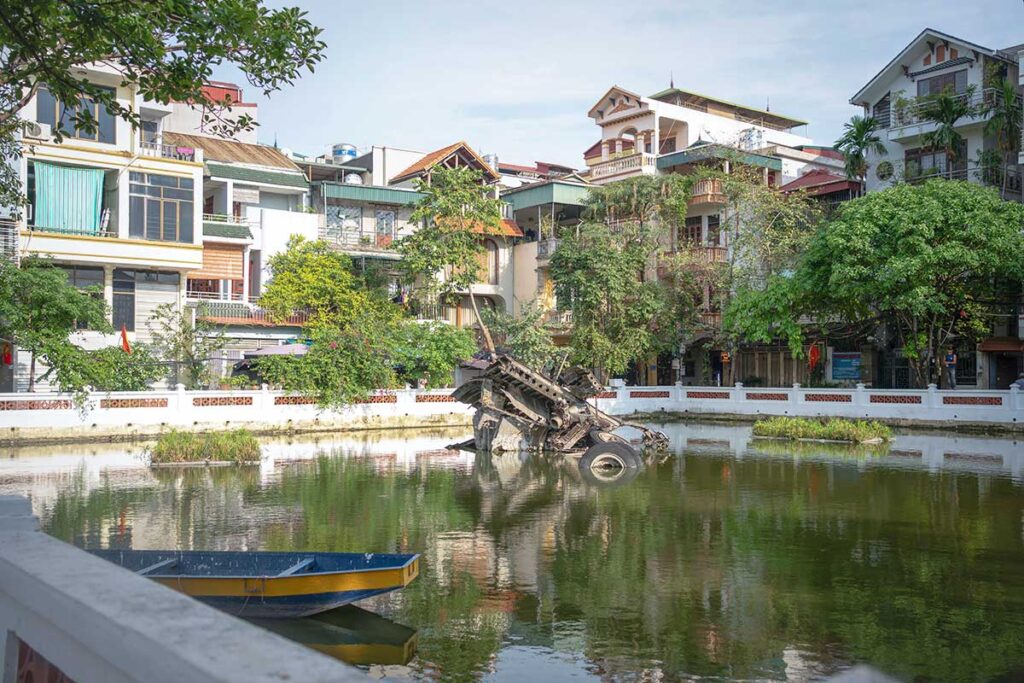
Just 300 meters south of the museum, you’ll find another war relic: the wreckage of a B52 bomber lying partly submerged in Huu Tiep Lake, often referred to as B-52 Lake. Unlike the reconstructed display at the museum, this site is raw and unpolished — a quiet neighborhood lake with a twisted section of bomber still visible in the water. It’s a small but powerful reminder of the December 1972 bombings and gives context to the museum’s exhibits.
For more details, see our full guide about B-52 Lake.
More nearby sights
The B52 Victory Museum is best combined with a visit to the Ba Dinh area, where many of Hanoi’s most important landmarks are located. If you’re planning a morning or afternoon around this district, you can easily add the museum to your route.
- Ho Chi Minh Mausoleum – The final resting place of Vietnam’s most revered leader, about 1 km away.
- One Pillar Pagoda – A small but iconic Buddhist temple set on a single pillar in a lotus pond.
- Ho Chi Minh Stilt House – The simple wooden house on stilts where Ho Chi Minh lived and worked.
- Ho Chi Minh Museum – A large and modern museum dedicated to the life and legacy of Ho Chi Minh.
Combining the museum with these sites makes for a fuller and more balanced day of history and culture in Hanoi.
Is B52 Victory Museum worth visiting?
The B52 Victory Museum is not worth a dedicated trip on its own. It’s a very small site with limited information, most of it only in Vietnamese, and the main interest lies in the outdoor wreckage. The indoor section adds some context but is fairly modest compared to Hanoi’s larger museums.
That said, if you’re already in the Ba Dinh area or planning to stop by B52 Lake, it makes sense to combine the two. In that context, the museum works as a quick but meaningful stop that adds perspective to the nearby lake site. War history enthusiasts or anyone with a personal interest in the Vietnam–US conflict will probably find it more engaging than casual visitors.
Pro tip: Vietnam Military History Museum
If you are seriously interested in Vietnam’s war history, the Vietnam Military History Museum is a much better choice than the B52 Victory Museum. Previously located near Ba Dinh Square, it has now moved to a larger site a bit further out of the city center.
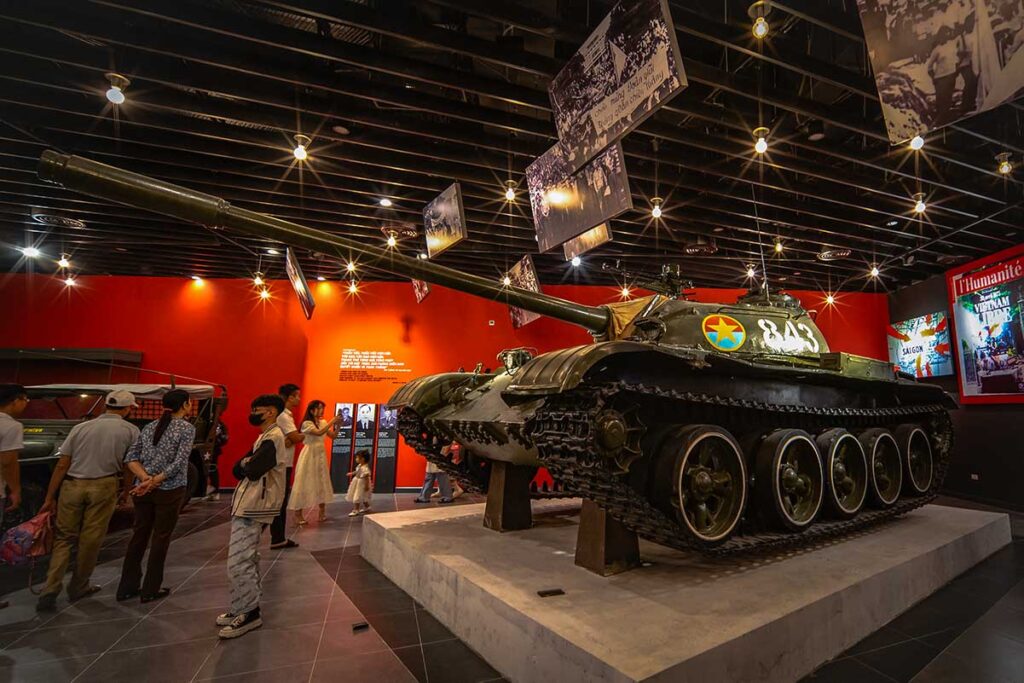
This museum covers both the French and American wars, with extensive collections of aircraft, tanks, weapons, documents, and photographs. It is far more comprehensive and better organized, making it one of the best places in Vietnam to understand the country’s modern military history. While the B52 Victory Museum is more symbolic and focused on a single event, the Military History Museum gives the bigger picture.
